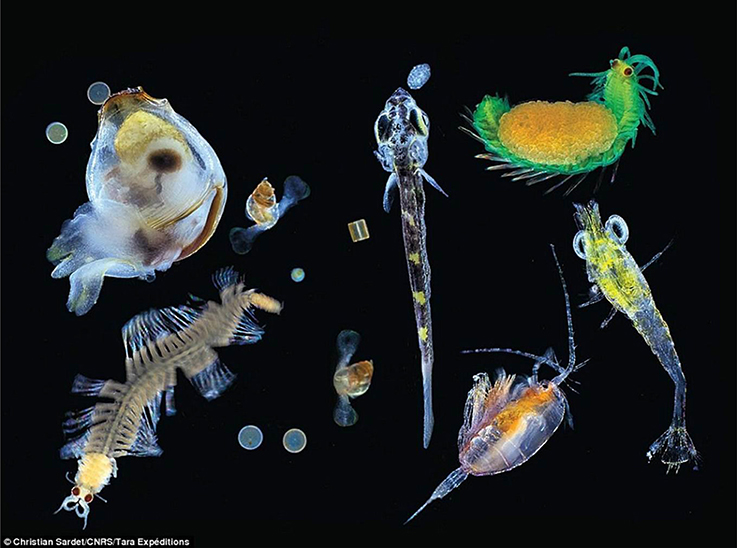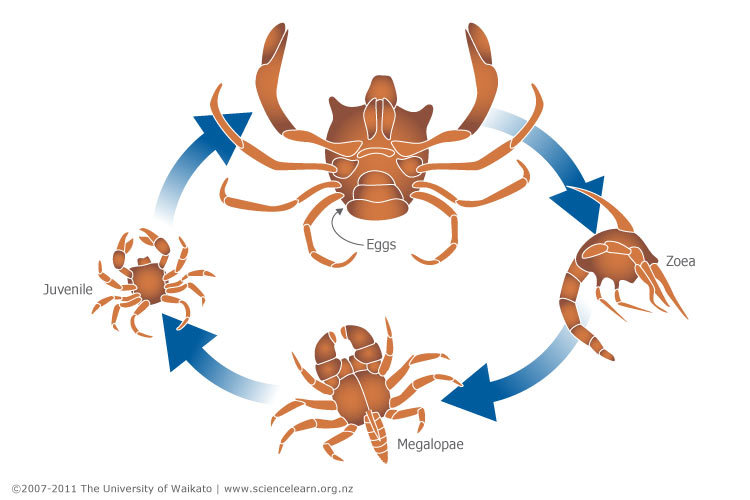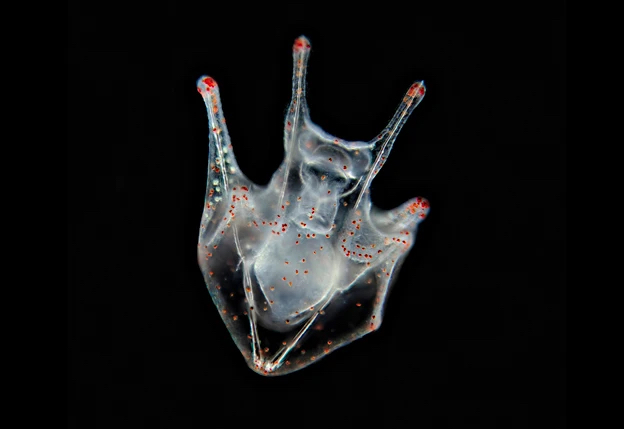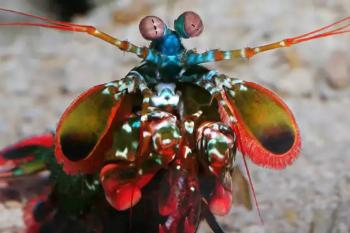
Plankton are a multitude of living organisms adrift in the currents. The word plankton comes from the Greek word for wandering. Our food, air, fuel, and building materials depend on plankton. There are two types of plankton: phytoplankton (plant) and zooplankton (animal). Both come in a dazzling array of body plans and life-cycles.
Providing the Oxygen We Need to Live
Phytoplankton are the base of the largest food web on the planet. These microscopic plants are like plants on land that require sunlight for energy, using photosynthesis to turn sunlight into energy. They also absorb carbon dioxide from the atmosphere and release oxygen that we all depend on. In fact phytoplankton produces as much oxygen as all the land plants put together. And like land plants, phytoplankton need nutrients including nitrate, phosphate, silicate, and calcium.
There is a nationwide Phytoplankton Monitoring Network (PMN) – a collaboration of citizen scientists operating under the National Atmospheric and Oceanic Administration (NOAA). The goals of the PMN are to monitor trends in plankton species in coastal waters throughout the year. Here in Monterey Bay, where Shape of Life is located, the local program is run out of Cabrillo College.
Zooplankton
Zooplankton are a huge number of animals characterized as either holoplankton or meroplankton. Holoplankton spend their entire lives as part of the plankton. They include krill, copepods, various sea snails and slugs, salps, jellies, and a small number of the marine worms.
Meroplankton spend only the larval, or early stages, of their lives as plankton; they live their adult lives settled on rocky or coral reefs, in mud or sand and other habitats, or swimming in the ocean, both shallow and deep. Meroplankton include the larval stages of common marine animals like sea urchins, sea stars, sea squirts, most of the sea snails and slugs, crabs, lobsters, octopuses, marine worms, and some fish.

Survival
Like all organisms these marine animals need to survive, grow and reproduce, and they have different strategies for doing that. The larval plankton spend differing amounts of time as plankton. They start out as embryos drifting in currents, but only a few survive to the next stage as these embryos are food for a diversity of animals. Most then go through several larval stages before becoming juveniles.
For example, Dungeness crabs have a five-stage zoea form in the plankton; they then metamorphosize to a megalops form, usually in the late spring and summer when currents take them closer to shore. The megalops undergo a metamorphosis, settling out as juvenile crabs in habitats like shallow estuaries areas, on structures such as pilings, woody debris and eelgrass where they have a better chance of surviving predators. These crabs remain as juveniles for two years.

Most echinoderms, like sea urchins, have only one planktonic stage, the pluteus larva, which looks like a tiny spaceship. After about a month, the larva reaches the rocky shore carried by waves and the baby urchin inside outgrows the pluteus, sticks its tube feet out and becomes a juvenile that settles out on the new habitat.
How larvae find a suitable place to live is the subject of ongoing research. Larvae sense a variety of biological and environmental factors. Scientists think that marine biofilms (complex microbial communities) are a cue for larval settlement of diverse invertebrates, but the mechanisms aren’t well understood. Larvae may also be attracted to settlement by the presence of adults, but scientists aren’t sure what those cues are. This strategy makes sense since the adults have survived, so it must be a good place to live.
So why do so many animals leave their young to survive on their own drifting in ocean currents? The planktonic lives of crabs and sea urchins illustrate the advantages of this life-cycle. By sending their spawn out to sea to drift in the plankton for varying amounts of time, the species guarantee dispersal and settling in new areas. Since so many marine invertebrates spend part of their lives in the plankton the advantages must outweigh the risks of being eaten.
There is a lot more to explore on The Plankton Chronicles.
















